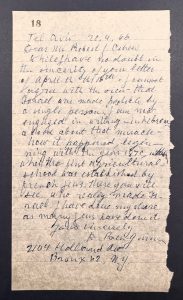The Lodz ghetto currency was another tool used by the Nazis to defraud and dehumanize their Jewish victims.
The ghetto in Lodz, Poland, held 160,000 Jews who were forced to live in the 1.6 mile-area, surrounded by barbed wire. The currency (referred to as the rumki because they were signed by Jewish Council head Mordechai Chaim Rumkowski) was a way to plunder Jewish property as Jews were forced to trade their assets for the nearly worthless currency which was usable only in the ghetto. The bills were nothing more than a token currency to maintain the farce of order, and were just another way to isolate and oppress the imprisoned Jews. The bill stands in silent witness to the Nazi atrocities and to the memory of those who endured them.
Yom Hashoah Ve-Hagevurah, the day of remembrance of the Holocaust and Heroism begins at sundown on Monday,April 17.







